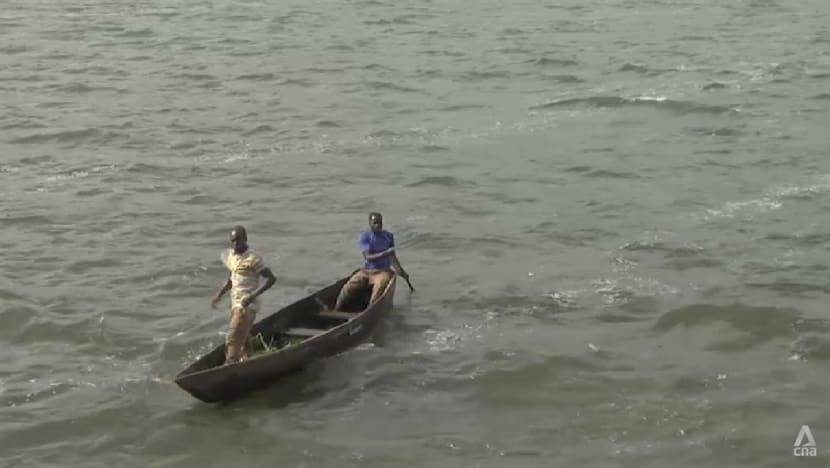Climate change, human misuse threatening Nile River, with flow of water likely to fall 70% by end of century
Millions rely on Africa’s longest river for survival.

The United Nations predicts the flow of water through Africa’s longest river is likely to fall 70 per cent by the end of the century, due to a warming climate which is causing extended dry spells.
JINJA, Uganda: Climate change, pollution and human misuse are putting existential pressure on the Nile River, a critical resource for millions of people.
The United Nations predicts the flow of water through Africa’s longest river is likely to fall 70 per cent by the end of the century, due to a warming climate which is causing prolonged dry spells.
The resulting water shortages are likely to impact agriculture and electricity production, and worsen the living conditions of millions who depend on the vital waterway, from its source in Uganda to its mouth in Egypt.
RIVER NO LONGER AS PRODUCTIVE AS BEFORE
Fisherman Assad Magumba, for instance, has spent much of his working life fishing on Lake Victoria, the world’s second-largest freshwater lake, and the main source of the Nile River.
He used to be able to earn a good livelihood from the fishing trade, but competition has grown by leaps and bounds over the years.
“The population of fishermen on the lake has increased. There are too many,” he said.
“The numbers have grown from a few hundred to thousands, all searching for fish on the same lake, and with increasing population, the demand for fish has also gone up.”
But he added that the river is no longer as productive as it used to be.
Its flow has fallen from 3,000 cubic metre per second to about 2,800 in the past 50 years, according to the UN.
The drop in water levels has been attributed to wetland degradation, the cutting down of forests for timber, and the expansion of farmland.
HUMAN EXPLOITATION STRAINING RIVER
Overuse by humans is also straining the natural resource.
The confluence of these factors has caused the Nile’s fish stocks to plummet.
“We are having urban settlements – Jinja City, Kampala City, Entebbe, Kisumu, Homa Bay – all through East Africa. Very big cities, increasing populations,” said natural resources officer Ernest Nabihamba.
“So we talk of pollution, we are polluting the lake, much more than probably the lake can handle.”
Research conducted by some environmental organisations also shows factories built near the shorelines are discharging harmful substances into water bodies.
Fishing communities are worried that the contaminated water may be behind the reduced fish stocks, claiming some fish species have vanished.
SAVING LIVELIHOODS
This problem has forced some fishermen to adopt new techniques such as cage fish farming in efforts to save their livelihood.
“The fish in the wild had become scarce, so we came together as former fishermen to start this fish farmer’s cooperative in 2012,” said cage fish farmer Philemon Kudere.
“Compared to the open waters, we can now harvest more than two, three, or five tonnes of fish in one cage, and get a lot more money in one go, starting at US$5,000 to over US$30,000.”
But the fish farms too, are not immune to the industrial pollution that spews harmful nutrients into the water.
These nutrients attract aggressive water weeds like the hyacinth, which is known to degrade the integrity of freshwater systems.
“Unless we have proper interventions, we have started a good journey of killing the lake because it is a freshwater lake,” said Mr Nabihamba.
“But it can be killed, it can become salty if there is too much pollution into it.”




















